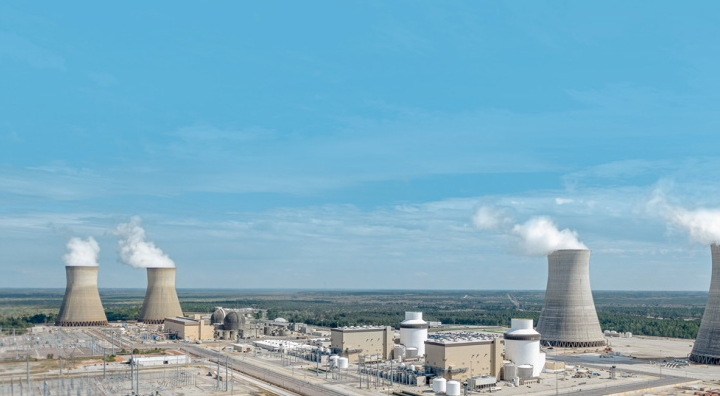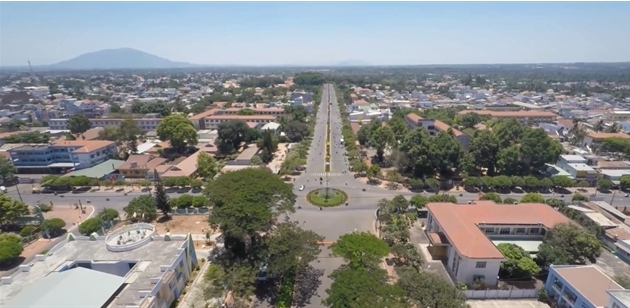Today, utility engineers spend a significant portion of their time completing repetitive administration tasks. Some organizations estimate that upwards of 40 per cent of the time of highly trained engineers is spent on these mundane tasks.
The maturation of artificial intelligence techniques such as machine learning and natural language processing has made them increasingly viable for use in automating more complex and higher impact tasks. AI has tremendous potential to reduce the substantial repetitive tasks, enabling these engineers to concentrate more on engineering.
Recently, Ontario Power Generation (OPG) – a generator with a diverse portfolio of over 16 GW of capacity, including 5.7 GW of in-service nuclear capacity – demonstrated the potential of AI in one specific step in the nuclear unit outage planning process.
Planned maintenance outages of two to three months in duration are an annual occurrence within OPG nuclear facilities. Each outage requires the scheduling of around 20,000 to 25,000 individual tasks. The majority of these tasks are similar to previous outages, meaning a team of highly-skilled outage personnel are reviewing procedures as well as manually searching and populating tasks from past schedules.
The current outage planning process at OPG consists of over 40 major milestones that start more than two years before a nuclear unit outage is set to begin. The outage milestones are based on industry best practices related to safety, reliability, scope and duration, and also take into consideration individual nuclear facility needs. Embedded throughout these milestones are the issuances of four revisions of the nuclear outage schedule, wherein each subsequent version is increasingly more detailed and comprehensive than the previous.
The Outage AI solution that OPG has deployed focuses on predicting logic ties for tasks that are to be included in the outage window, creating the very first version of the schedule with all tasks populated. This approach ensures reduces manual effort while sufficient oversight contingency is maintained throughout the development of each subsequent nuclear outage schedule revision to mitigate both risk and possible duration extensions.
Leveraging artificial intelligence
The Outage AI solution is a custom-built, cloud-hosted application that integrates seamlessly with the existing IT infrastructure at OPG and leverages elements of AI, machine learning, NLP and intelligent automation. The objective here is to predict the work breakdown structure of the 20,000 to 25,000 tasks, including their logical predecessors and successors (logic ties), and automatically schedule them within the upcoming nuclear unit outage Revision ‘B’ schedule.
The Outage AI solution currently uses eight-years’ worth of past outage data to create these predictions and has also been developed to ingest upcoming nuclear unit outage schedules into future preventative maintenance outages. This creates a robust solution that actively learns and gets more intelligent as more and more data is processed, delivered and consumed by its underlying algorithms.

The solution itself is composed of three foundational pillars that were developed to address a variety of specific functional and technical requirements provided by the outage team throughout the solution design: (i) the creation of dummy tasks to identify missing tasks from the current outage schedule that existed in historical ones; (ii) the automated scheduling of as-yet-unscheduled tasks; and (iii) the removal of logic ties that would otherwise cause loops in the schedule. The former two are centred around an NLP-based text-matching algorithm that compares work orders and tasks in the current outage to those existing in historical ones, whereas the third uses a loop detection algorithm to identify culprit logic ties and quality control the solution output.
To create dummy tasks, the text-matching algorithm compares an aggregate list of all historical tasks pertaining to a specific work order to the tasks of the corresponding work order in the current schedule. Those that exist in the historical list and are identified by the text-matching algorithm as missing from the current outage and brought into the current schedule as dummy tasks. These dummy tasks then serve as a quality assurance check for cases when the current list of tasks may have been incomplete, indicating to the work schedulers that it should be revisited for integrity. The dummy task creation process is repeated for all work order descriptions in the current nuclear unit outage schedule, referencing all historical outage schedules in the process.
Once the dummy tasks are created for all work orders in the current outage, the text-matching algorithm is used to facilitate the creation of logic ties between tasks in the current schedule. This process occurs by identifying the best-matching historical task for a given task in the current outage schedule, and inferring the correct predecessor and successor logic ties for the current task based on how the best-matching historical task was scheduled. The logic tie creation process is repeated for all unscheduled tasks in the current outage that are flagged to be scheduled by the Outage AI solution.
Lastly, the Outage AI solution performs a quality control check to ensure that any ties generated as a result of the logic tie creation pillar do not cause loops in the schedule. This process is relatively straightforward, wherein the loop detection algorithm traverses all predecessors of the current task of interest to determine whether it is indeed a predecessor of itself. If the current task is identified to be its own predecessor by means of an upstream logic tie, the culprit relationship is terminated and the loop is thereby removed.
While the three foundational pillars constitute the core of the Outage AI solution, they are also bookended by an on-demand data transfer mechanism that sends candidate nuclear unit outage schedules into (and out of) the cloud-hosted environment, directly from (and to) the original on-premises servers and software systems. This allows for seamless integration with the existing technical stack as well as minimal to no disruption to the outage work schedulers’ computer-aided scheduling duties.

Finally, throughout the development of this AI-focused initiative for OPG, the collective team has made sure to embed into the Outage AI solution three key elements that are critical to the long-term success of the project. First, the team has made sure the solution is valuable through improvements in human labour efficiency. Second, it has built the solution to be scalable within OPG to the planned maintenance of other power-generating sites and assets. And third, the team has developed a framework for OPG that is expandable in the future to account for scope changes and also include resource balancing, in an effort to further enhance the current solution’s capabilities.
AI, Machine Learning, NLP and Intelligent Automation are not single solutions. They each fall along a spectrum that is based on problem complexity and predictive power, and as such need to be identified and designed with the right combination of business knowledge and industry expertise to provide fruitful and meaningful results.
The endeavour to implement these new and emerging technologies into one specific step of the nuclear unit outage planning process at OPG allows outage staff to focus on higher value activities, not repetitive tasks related to creating the first version of the schedule. The Outage AI solution facilitates scheduling improvements and optimization by quickly processing large volumes of historical outage data that are slowly becoming far too vast and time-consuming for a human to thoroughly analyze. In turn, this enables reductions in human scheduling errors and oversights as well as more robust identification of missing tasks, leading to the potential for reduced nuclear unit downtime.
Throughout the course of the Outage AI project, additional AI opportunities have also been identified within the broader outage planning process, beyond just the generation of the first schedule. While many opportunities exist, certainly the most compelling to pursue is scaling the Outage AI solution to create draft schedules for planned maintenance outages at similar sites and assets.
An alternative but complementary opportunity for AI involves improved workload, resource and capacity balancing to promote process effectiveness and elucidate operational efficiencies in outage planning. There also exists a noteworthy opportunity in overlaying AI-based techniques onto the connected supply chain to drive performance and increase productivity by leveraging data in more of a prescriptive, rather than diagnostic or even predictive, manner. While this aforementioned list is by no means exhaustive, it offers a glimpse into the potential benefits that can be realized when AI is used to facilitate data-driven decision making and effectively complement the human workforce in the nuclear industry.







